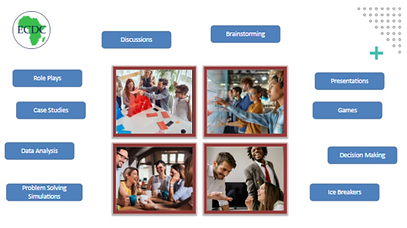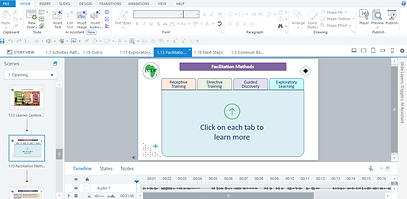Intro to Facilitation Course
The Ethiopian Community Development Council (ECDC) is a refugee resettlement agency that supports refugees and immigrants through a national network of affiliates. ECDC HQ provides training and technical assistance to staff, helping them deliver effective programs. This course was designed to give program officers a foundational understanding of adult learning principles and facilitation techniques.


Overview
The Problem
ECDC operates a network of twenty-four affiliate offices, each with staff who require training and support to effectively deliver various program services to clients.
While the HQ program staff are highly knowledgeable and skilled in program administration, they lack expertise in training and facilitation, resulting in affiliate staff requesting additional training and support.
The Solution
To enhance training and technical assistance, I developed a new Standard Operating Procedure for training development, which includes this Intro to Facilitation Course. With a solid understanding of learning principles and techniques for engaging learners, HQ staff are better prepared to deliver effective training sessions.
My Process




Needs Analysis
After working closely with HQ staff and collaborating on training projects, I noticed a gap in their understanding of adult learning principles. As a result, the course was created to serve as an introduction to facilitation and key concepts in adult learning and their application.
Scope
The course scope needed to be carefully defined, as facilitation is a skill that requires practice. It was designed to introduce key concepts, ensuring that when staff collaborated with me, they would not only understand the methods used but also apply them effectively.
Design
Key concepts are divided into accessible chunks, each followed by interactive elements like a sorting activity, critical thinking questions, and opportunities to apply methodologies. The design features a pastel color palette, complemented by friendly illustrations and welcoming layouts.
Development
Using Storyline 360, I developed scenes featuring tabbed interactions, animated elements, sorting activities, multiple-choice questions, and narrated audio. This approach ensures a smooth flow between sections, effectively delivering key concepts to the user.
Results & Takeaways
This course was introduced as part of a new training standard operating procedure I developed to streamline training creation. After completing the course, staff meet with me to work on training projects.
As a result, they were able to apply course concepts directly to their projects, enhancing the quality of their training. Post-implementation feedback showed a significant increase in positive responses, particularly regarding the interactive activities and the application of key concepts.



